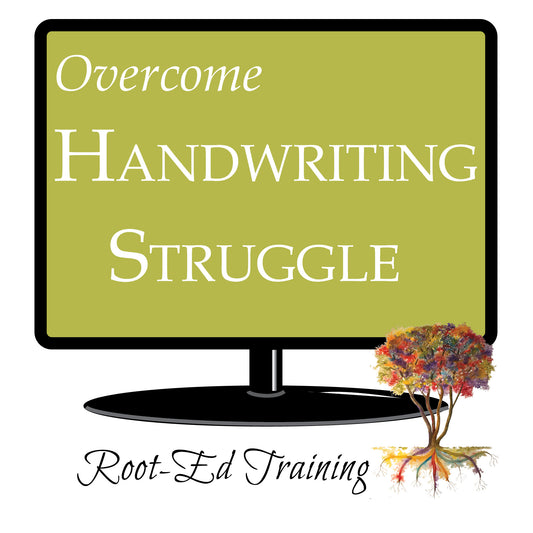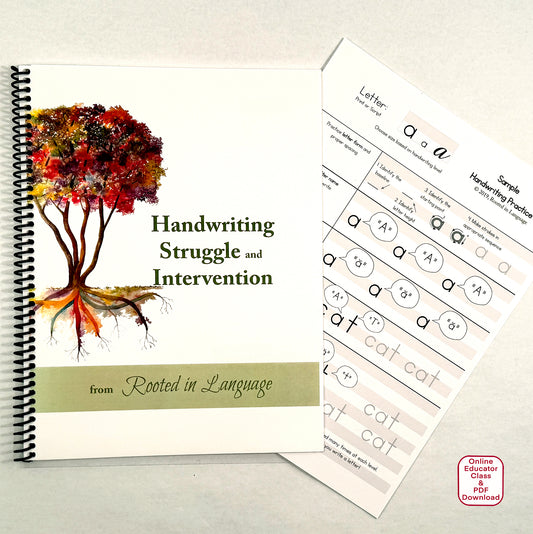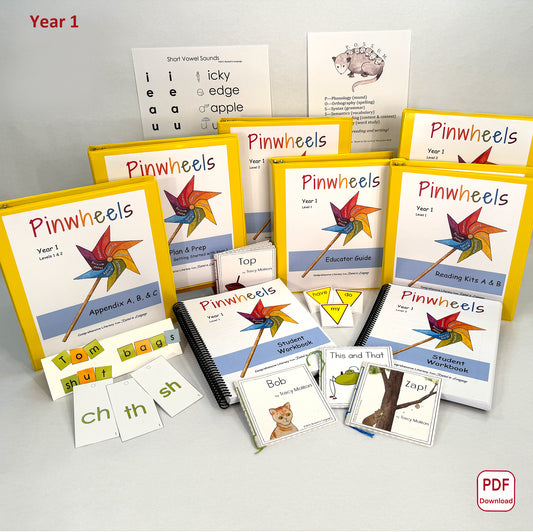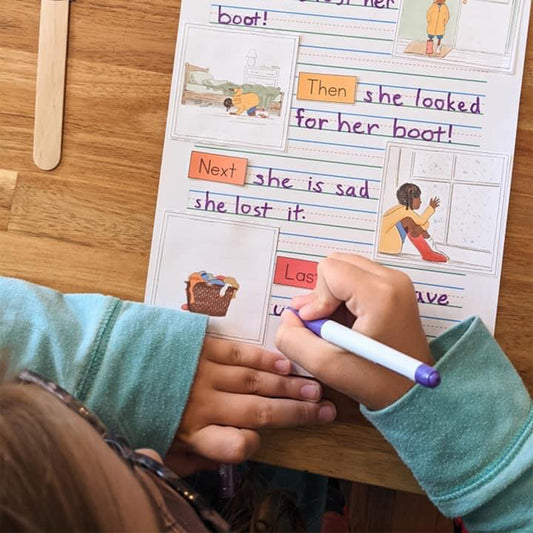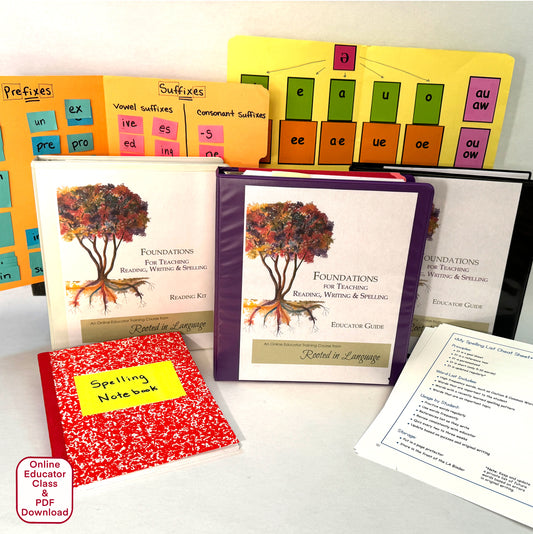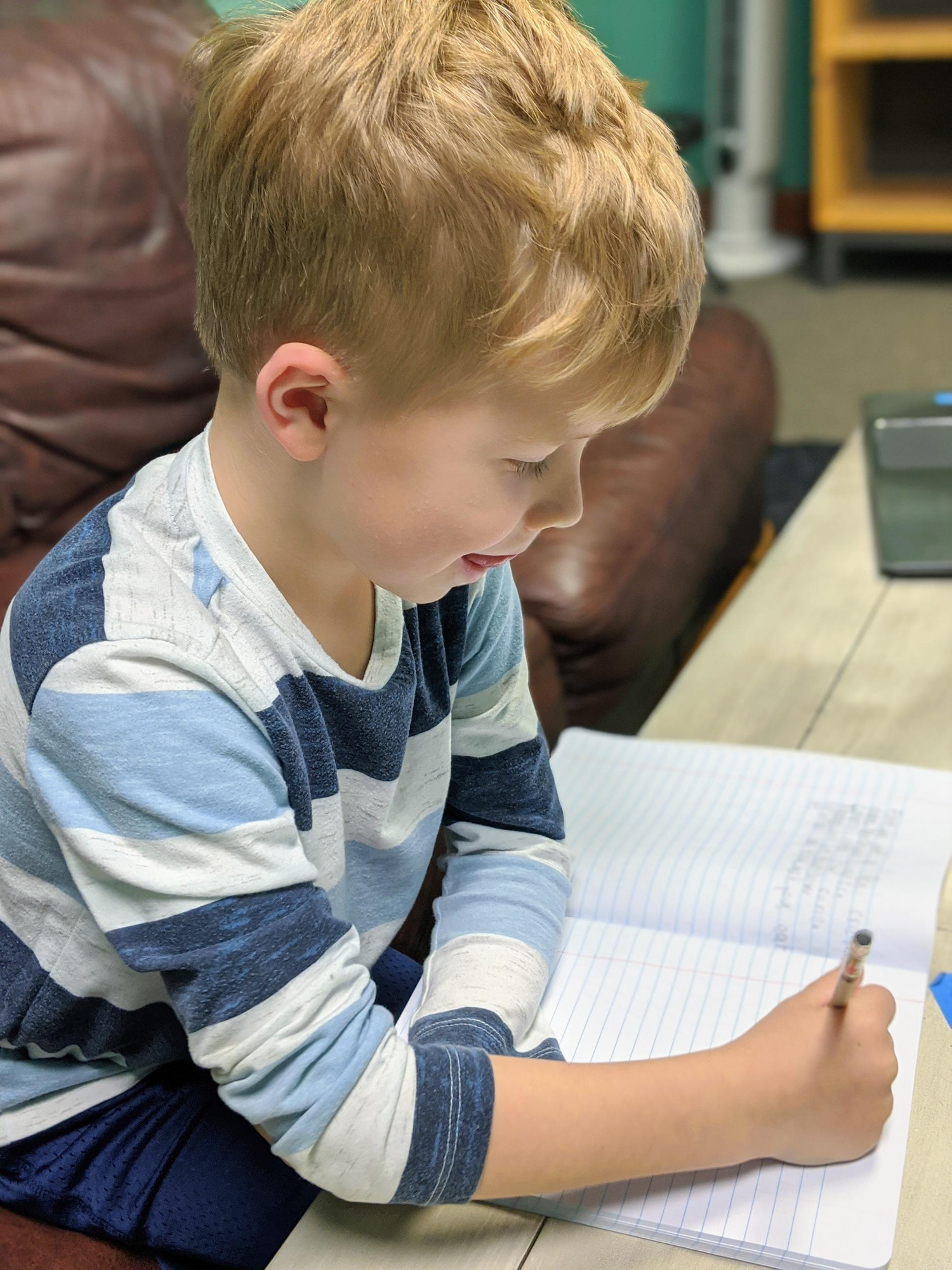What Is Dysgraphia?
Dysgraphia is primarily a difficulty in developing the fast and automatic sound-to-letter connections needed for handwriting. Weak skills in matching sounds to letters, known as a sublexical weakness, negatively affects one’s ability to adequately store and efficiently recall letter shapes and orientation.
Sublexical weakness also impedes the student’s ability to develop fast and automatic sight words for accurate spelling. This ability is known as word form memory. Poor word form memory even affects the student’s recall of simple, high-frequency words despite repeated exposure in reading.
These combined weaknesses — poor sound-to-letter connections and poor word from memory — prohibit the student from obtaining the level of writing fluency needed for successful composition.

Dysgraphia is a language-based disorder that interferes with learning to write. This difficulty happens at both the foundational level of learning and at the word level of learning.
Learning to read and write are two abilities tied to our underlying language skills. When we learn to read and write, we repurpose many of the foundational skills we use to listen and speak.

Our language tree shows the relationship of the 4 modes of language:
listening, speaking, reading, and writing.
The roots represent some of the underlying skills needed to learn. The canopy shows an overview of the resulting abilities that are developed over time.
Skills that connect written words to meaning and usage are called lexical skills. These are represented by our tree’s trunks, and some of the roots of vocabulary and grammar.
For writing, grammar is tied to mechanics, and vocabulary is tied to the word-level skills of spelling and meaning.
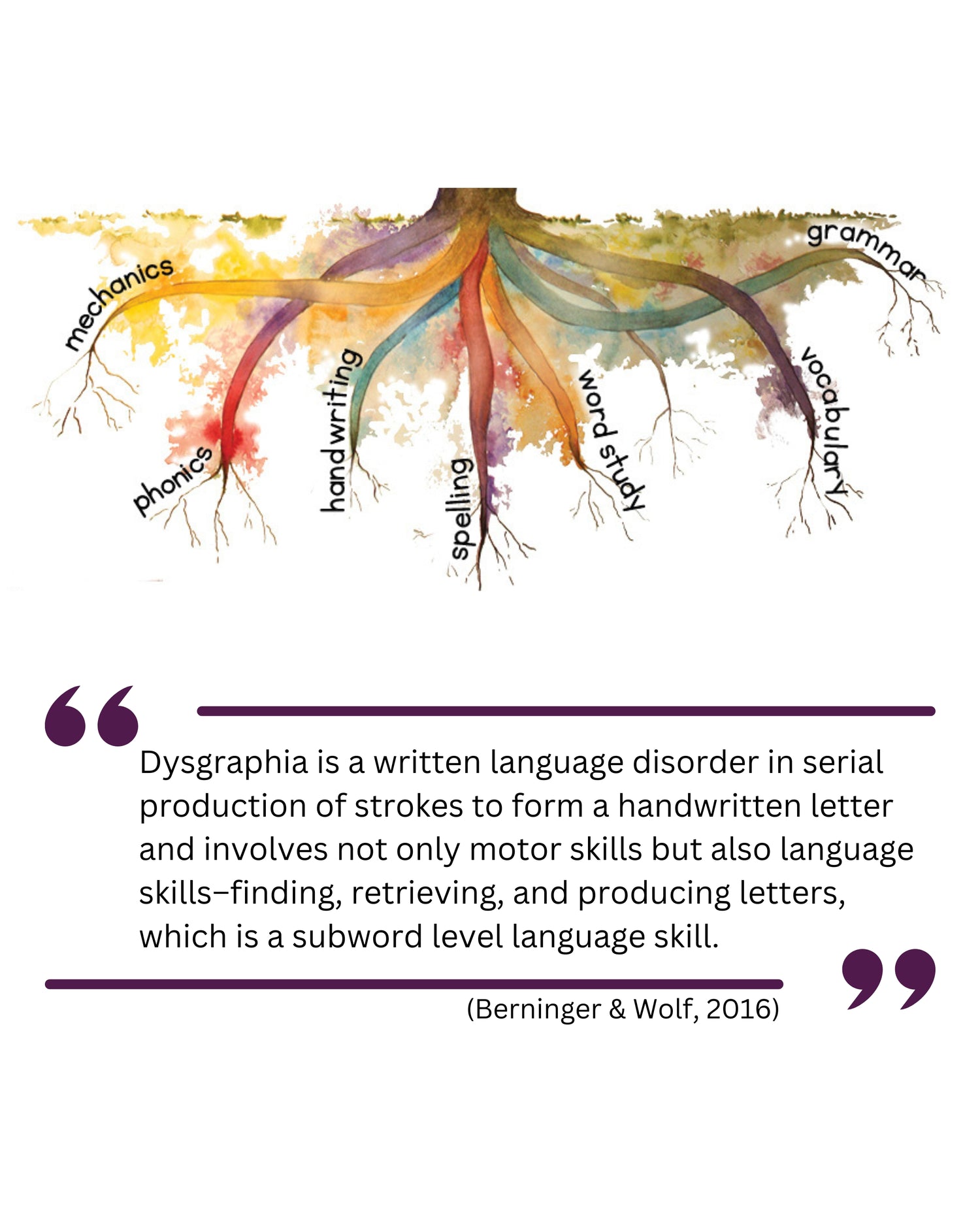
Foundational skills include word-level skills that must become automatic in order to write fluently and spell accurately. Think of these as the roots of literacy.
Dysgraphia is a weakness at an even deeper level, known as sublexical skills. Children with dysgraphia find it difficult to learn and create the sound-to-letter connections needed to easily and quickly represent letters while writing.
These sublexical skills may include many of the same skills needed for reading:
- Phonological processing
- Phonological memory
- Learning letter sounds easily and rapidly
- Developing automatic sound-to-letter connections
However, because dysgraphia is a difficulty in writing, sublexical skills also include:
- Rapid association of letter names to letter formation
- Automatic transcription of sounds-into-letters
- Visual differentiation and recall of letter size, direction, and orientation, in order to attach meaning to subtle differences; for example: b, d, p, q
- Recognition and recall of sound-to-letter constancy across variations in presentation; such as the differences in fonts for a and g, or between uppercase and lowercase letters
- Motor planning and memory for the sequential strokes needed to form letters; for example: straight, diagonal, and curved lines
- Proprioceptive and kinesthetic skills needed for movement
- Visual processing and analysis
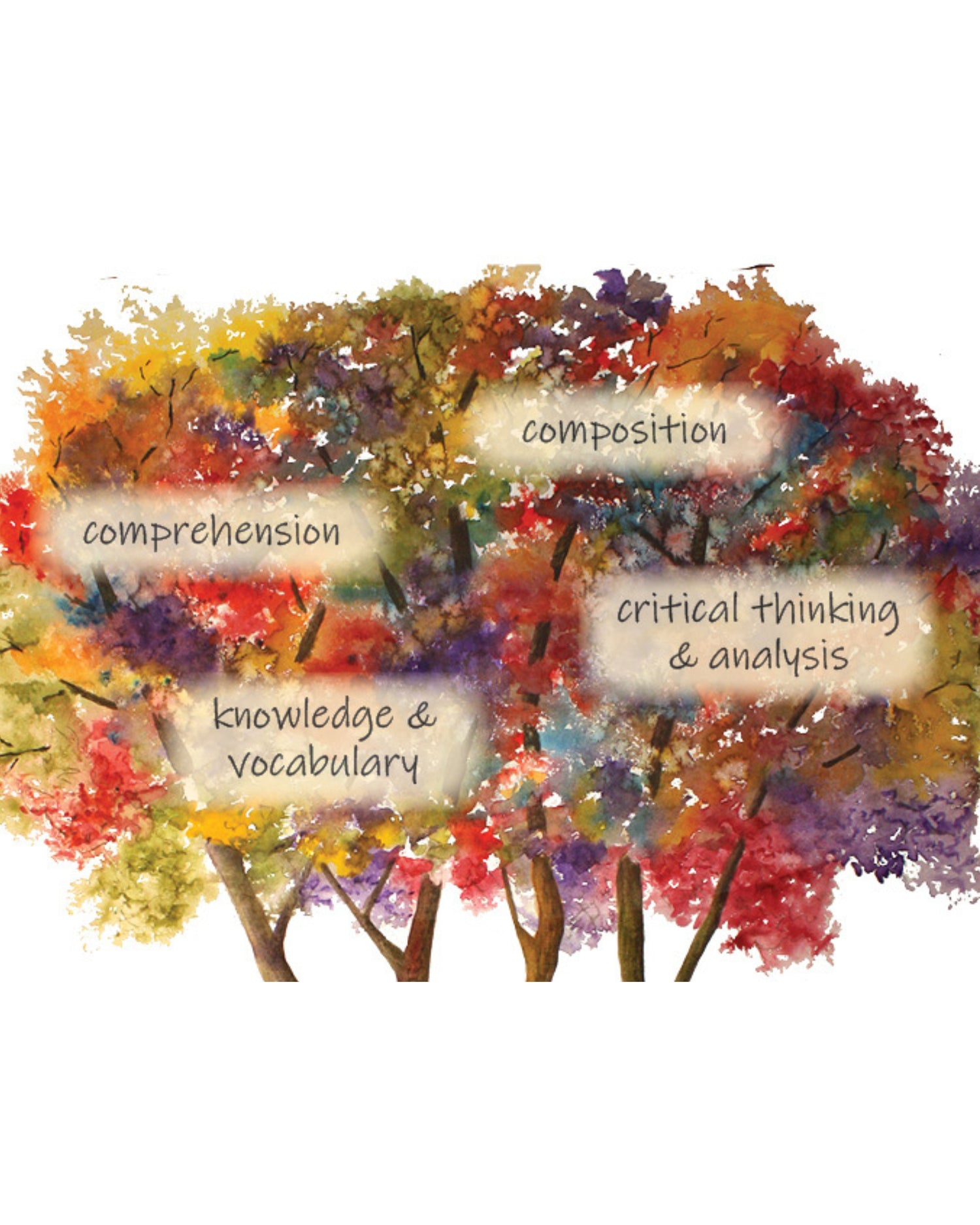
Because students with dysgraphia have a combination of sublexical and lexical weaknesses which impede automatic letter and word production for fluent writing and accurate spelling, they experience a significant cognitive burden when trying to write.
Without efficient transcription skills of letter production and spelling, students struggle to access the higher-level thinking skills needed to compose text. Students with dysgraphia usually demonstrate cognitive overload, manifested in a tight and nonfunctional pencil grasp, complaints of hand pain and fatigue, slow writing speed, illegible print, poor task perseverance, and frustration.
How Do I Know If My Student Has Dysgraphia?
The three most common causes of reading and writing struggle are Dyslexia, Dysgraphia, and Developmental Language Disorder. Each of these disorders has typical indicators. However, some of the symptoms can overlap. Download our checklist to help you better understand your student and determine if they show signs of dysgraphia.
Download a Checklist of Indicators
We discuss more about the most common causes of reading and writing struggle in this video.
How Can I Help My Student with Dysgraphia?
Kids with dysgraphia need caring adults who take the time to support them and find the teaching methods and resources they need. Kudos to you for gaining knowledge and pursuing answers to help your learner!
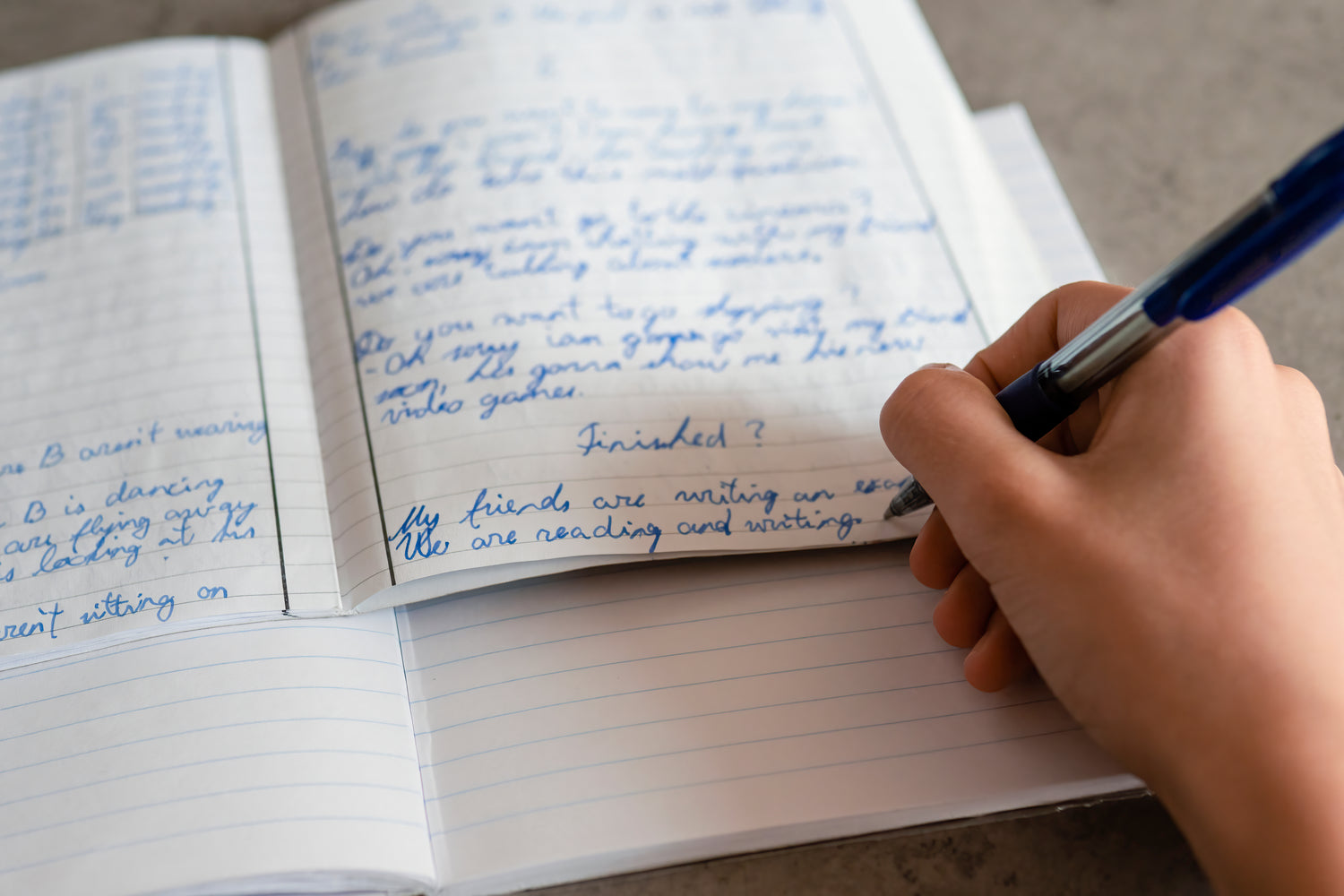
Teaching children with dysgraphia demands specific instruction that includes:
- Research-based teaching strategies to strengthen handwriting skills, with an emphasis on learning cursive
- Explicit and systematic instruction to establish strong sound-to-letter connections — shored up in reading but specific to writing and spelling
- Engaged writing practice on individualized skills, including using skills in original writing
- Consolidation of foundational handwriting and spelling skills applied in context to build writing fluency
- Strategies to strengthen the phonological component of handwriting by having the student say sounds as they write letters, syllables, and words
- Consistent and targeted practice routines at least five days per week over many years
- Continual review to help solidify new learning
- Modifications to help students perform at grade level while using their writing skills
Our goal is to help you become the educator your child needs. We teach you the necessary approach to help your child reach their full potential. The good news is that these teaching methods benefit all students, helping everyone become competent and independent learners.
Do I Need a Special Program for Dysgraphia?
Researchers are beginning to understand the underlying causes of dysgraphia and the strategies students need for successful learning. Students with dysgraphia struggle to learn and recall automatic sound-to-letter connections, sight words, and basic spelling patterns. These students learn best using evidence-based teaching methods that employ consistent practice and application. All of this must be presented in a comprehensive curriculum that combines reading, writing, and spelling.
Our curriculum and online educator training courses provide exactly that. We show you how to work with kids to improve their foundational skills. We help you understand how writing works and how best to teach students with dysgraphia, so you can feel confident that your student is on the best path to success.
Best of all, we know first hand that our strategies work! We have over four decades of experience in working with students who struggle in the areas of listening, speaking, reading, and writing. Every student can succeed!
Our programs are appropriate for all age levels, but it is the student's skill level that should be the primary consideration for determining where to begin. With dysgraphia, this may mean a new start to building sound-to-letter connections using more robust strategies!
Are There Tests for Dysgraphia and Should I Get My Student Tested?
Because some students with dysgraphia may also have dyslexia and/or an underlying Developmental Language Disorder (DLD), students should receive a comprehensive assessment for all three areas of concern. Testing for all of these learning struggles includes assessing three key sublexical skills:
- Phonological Processing
- Phonological Memory
- Rapid Automatic Naming
A comprehensive evaluation will also measure the student’s sublexical writing skills and writing fluency:
- Alphabet memory in writing
- Letter formation accuracy
- Letter and word legibility
- Writing speed
- Writing fluency (accuracy + speed when copying text & in original writing)
Note: Tests to determine dysgraphia are relatively new and may be limited based on the age of the student. If a standardized dysgraphia assessment is not available, an inventory of dysgraphia symptoms is sufficient to recommend intervention using evidence-based instruction.
Assessments will also measure the student’s lexical skills:
- Spelling
- Reading accuracy
- Reading fluency
- Reading comprehension
- Listening comprehension
An inventory of the student’s speech and language development is also obtained to determine if there is a history of speech or language delay. If a Developmental Language Disorder is suspected, the assessment should also address the following areas:
- Language Working memory
- Syntax skills
- Sentence formulation skills
- Vocabulary level
Contact your local chapter of the International Dyslexia Association: ask for a referral for an educational psychologist, neuropsychologist, or speech-language pathologist who tests for dyslexia and dysgraphia. If you contact your local school system, Children's Hospital, or other agencies, be aware that you must find a professional who specializes in diagnosing dyslexia, dysgraphia, and Developmental Language Disorder.
If you are still unsure about testing but would like answers to your specific questions, schedule a coaching session with a Rooted in Language expert. We can help you develop a learning plan and path forward for your student!



